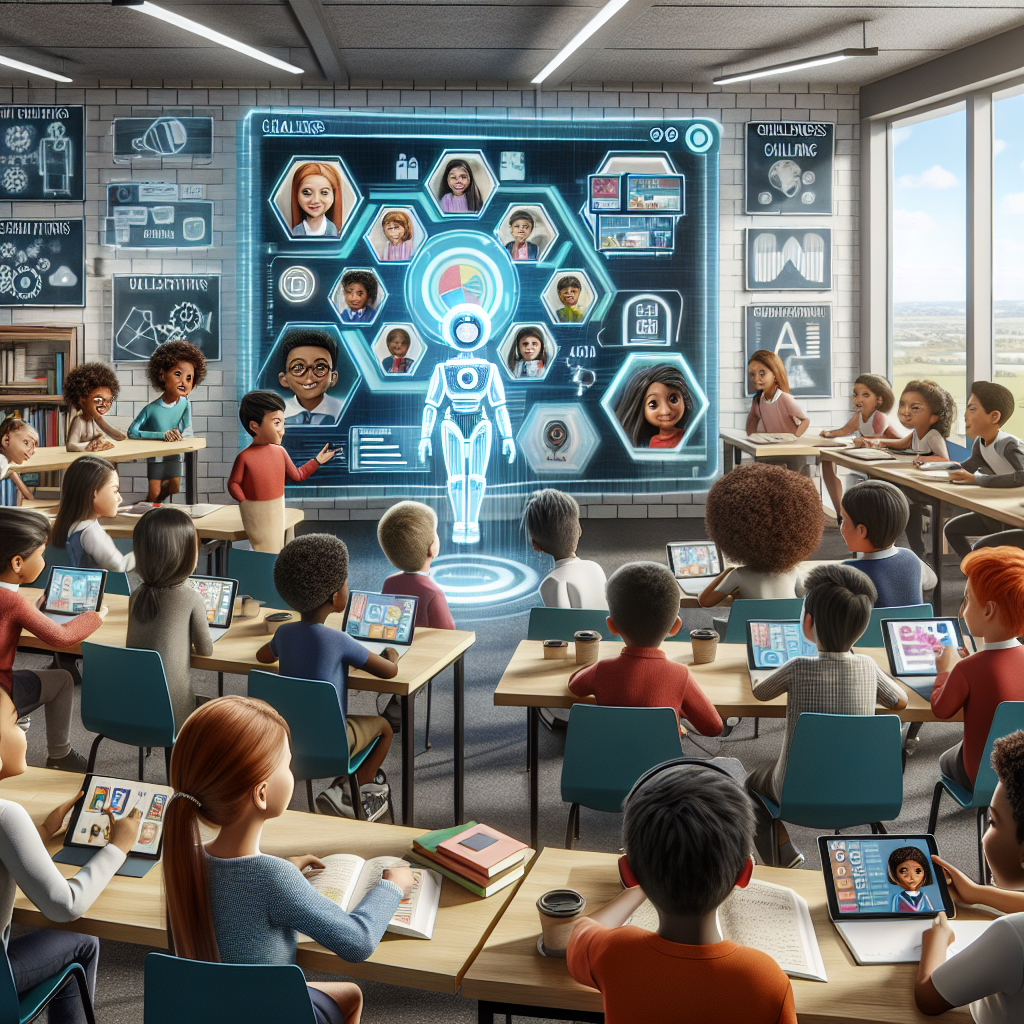AI in Education: Transformative Use Cases, Success Stories, and Challenges

```html
Artificial Intelligence is transforming the world of education in incredible ways. From personalizing learning experiences to streamlining administrative tasks, AI is enabling educators and students to achieve more efficient and effective outcomes. In this blog post, we'll delve into the various use cases of AI in education, share inspiring success stories, and discuss the challenges and lessons learned along the way.
Personalized Learning
One of the most promising applications of AI in education is personalized learning. AI-powered platforms like DreamBox and Knewton analyze student data to tailor educational content to individual learning paces and styles. This level of customization helps students grasp concepts more effectively and allows them to progress at their own pace.
However, personalized learning isn’t without its challenges. Some educators found that relying too heavily on AI recommendations led to a disjointed learning experience. This highlighted the need for a balanced approach where AI complements the teacher's insight, ensuring a harmonious and cohesive educational journey.
Virtual Teaching Assistants
AI-powered virtual teaching assistants are enhancing the educational experience by providing round-the-clock support. Tools like IBM’s Watson Tutor and Carnegie Learning’s MATHia can answer student queries, provide feedback on assignments, and offer additional study resources, enabling teachers to focus on more interactive aspects of teaching.
Some institutions, however, faced issues when students began relying too much on virtual assistants, which impacted their engagement with human instructors. This stresses the significance of integrating AI in a way that supplements but does not replace the human element of teaching.
Automating Administrative Tasks
AI is streamlining administrative tasks, reducing the workload for educators and administrators. Software like Grammarly and Turnitin automates grading and plagiarism detection, while platforms like AdmitHub facilitate student admissions and communicate important deadlines, improving efficiency and accuracy.
Yet, the deployment of AI for administrative tasks is not without hurdles. An educational institution experienced disruptions when their automated system miscalculated grades, underlining the necessity for regular system checks and human oversight to ensure the accuracy and fairness of assessments.
Predictive Analytics for Student Success
AI is helping educators predict student outcomes and intervene proactively. Tools like Civitas Learning and Agora enable institutions to analyze academic and behavioral data to identify students at risk of falling behind and provide targeted support. This early intervention facilitates better student retention and success rates.
Nevertheless, predictive analytics can sometimes lead to misinterpretations. A school faced backlash when their AI system incorrectly flagged high-performing students as at-risk, prompting unwarranted interventions. This underscores the importance of transparency, continuous monitoring, and validation of AI predictions.
Enhancing Accessibility
AI is playing a crucial role in making education more accessible to students with disabilities. Technologies like Microsoft's Seeing AI and Google's Live Transcribe provide real-time assistance to visually and hearing-impaired students, ensuring they receive the same educational opportunities as their peers.
Implementing these technologies can still present challenges. Institutions found that some AI tools struggled with accuracy in noisy or crowded environments, highlighting the need for continuous refinement and adaption to various classroom settings for optimal performance.
Language Learning
AI is revolutionizing language learning through interactive apps like Duolingo and Babbel. These platforms use AI to provide personalized feedback, adapt difficulty levels, and keep learners engaged through gamified experiences, making language acquisition more enjoyable and effective.
However, the effectiveness of AI in language learning can be limited by its reliance on data. A study found that the lack of contextual understanding in AI-driven language platforms often led to misunderstandings. This highlights the necessity for continual data updates and cultural context integration to make AI-driven language learning more comprehensive.
The Future of AI in Education
The future of AI in education holds immense potential with advancements in real-time learner analytics, AI-driven curriculum development, and augmented reality classrooms. AI's capabilities in data analysis, personalization, and automation will continue to drive significant innovations that shape the future of learning.
To fully leverage AI’s potential in education, addressing ethical considerations, ensuring data privacy, and fostering collaboration between technologists and educators are crucial. A balanced approach that combines AI technology with human expertise will be key to navigating the complexities and opportunities AI brings to education.
In conclusion, AI is transforming education through personalized learning, virtual teaching assistants, administrative task automation, predictive analytics, accessibility enhancements, and language learning advancements. Success stories from platforms like DreamBox and Duolingo showcase AI's transformative impact, while challenges emphasize the need for continuous refinement and ethical practices. As AI technology advances, its role in education will expand, offering new opportunities for innovation, efficiency, and enhanced learning experiences.
```



